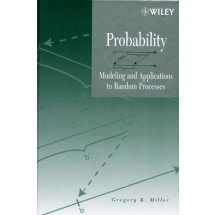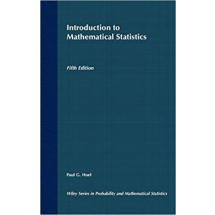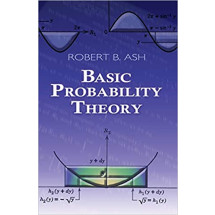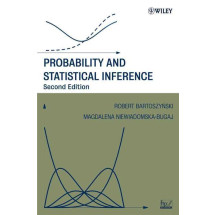1 DEFINITION OF INFORMATION
1 Introduction
2 Definition
3 Divergence
4 Examples
5 Problems
2 PROPERTIES OF INFORMATION
1 Introduction
2 Additivity
3 Convexity
4 Invariance
5 Divergence
6 Fisher's information
7 Information and sufficiency
8 Problems
3 INEQUALITIES OF INFORMATION THEORY
1 Introduction
2 Minimum discrimination information
3 Sufficient statistics
4 Exponential family
5 Neighboring parameters
6 Efficiency
7 Problems
4 LIMITING PROPERTIES
1 Introduction
2 Limiting properties
3 Type I and type II errors
4 Problems
5 INFORMATION STATISTICS
1 Estimate of I(*:2)
2 Classification
3 Testing hypotheses
4 Discussion
5 Asymptotic properties
6 Estimate of J(*,2)
7 Problems
6 MULTINOMIAL POPULATIONS
1 Introduction
2 Background
3 Conjugate distributions
4 Single sample
4.1 Basic problem
4.2 Analysis of I(*:2;ON)
4.3 Parametric case
4.4 "One-sided" binomial hypothesis
4.5 "One-sided" multinomial hypotheses
4.5.1 Summary
4.5.2 Illustrative values
5 Two samples
5.1 Basic problem
5.2 "One-sided" hypothesis for the binomial
6 r samples
6.1 Basic problem
6.2 Partition
6.3 Parametric case
7 Problems
7 POISSON POPULATIONS
1 Background
2 Conjugate distributions
3 r samples
3.1 Basic problem
3.2 Partition
4 "One-sided" hypothesis, single sample
5 "One-sided" hypothesis, two samples
6 Problems
8 CONTINGENCY TABLES
1 Introduction
2 Two-way tables
3 Three-way tables
3.1 Independence of the three
classifications
3.2 Row classification independent of
the other classifications
3.3 Independence hypotheses
3.4 Conditional independence
3.5 Further analysis
4 Homogeneity of two-way tables
5 Conditional homogeneity
6 Homogeneity
7 Interaction
8 Negative interaction
9 Partitions
10 Parametric case
11 Symmetry
12 Examples
13 Problems
9 MULTIVARIATE NORMAL POPULATIONS
1 Introduction
2 Components of information
3 Canonical form
4 Linear discriminant functions
5 Equal covariance matrices
6 Principal components
7 Canonical correlation
8 Covariance variates
9 General case
10 Problems
10 THE LINEAR HYPOTHESIS
1 Introduction
2 Background
3 The linear hypothesis
4 The minimum discrimination information statistic
5 Subhypotheses
5.1 Two-partition subhypothesis
5.2 Three-partition subhypothesis
6 Analysis of regression: one-way
classification, k categories
7 Two-partition subhypothesis
7.1 One-way classification, k categories
7.2 Carter's regression case
8 Example
9 Reparametrization
9.1 Hypotheses not of full rank
9.2 Partition
10 Analysis of regression, two-way
classification
11 Problems
11 MULTIVARIATE ANALYSIS; THE MULTIVARIATE
LINEAR HYPOTHESIS
1 Introduction
2 Background
3 The multivariate linear hypothesis
3.1 Specification
3.2 Linear discriminant function
4 The minimum discrimination information statistic
5 Subhypotheses
5.1 Two-partition subhypothesis
5.2 Three-partition subhypothesis
6 Special cases
6.1 Hotelling's generalized Student ratio (Hotelling's T(2))
6.2 Centering
6.3 Homogeneity of r samples
6.4 r samples with covariance
6.4.1 Test of regression
6.4.2 Test of homogeneity of means and regression
6.4.3 Test of homogeneity, assuming regression
7 Canonical correlation
8 Linear discriminant functions
8.1 Homogeneity of r samples
8.2 Canonical correlation
8.3 Hotelling's generalized Student ratio (Hotelling's T(2))
9 Examples
9.1 Homogeneity of sample means
9.2 Canonical correlation
9.3 Subhypothesis
10 Reparametrization
10.1 Hypotheses not of full rank
10.2 Partition
11 Remark
12 Problems
12 MULTIVARIATE ANALYSIS: OTHER HYPOTHESES
1 Introduction
2 Background
3 Single sample
3.1 Homogeneity of the sample
3.2 The hypothesis that a k-variate normal population has a specified
covariance matrix
3.3 The hypothesis of independence
3.4 Hypothesis on the correlation matrix
3.5 Linear discriminant function
3.6 Independence of sets of variates
3.7 Independence and equality of
variances
4 Homogeneity of means
4.1 Two samples
4.2 Linear discriminant function
4.3 r samples
5 Homogeneity of covariance matrices
5.1 Two samples
5.2 Linear discriminant function
5.3 r samples
5.4 Correlation matrices
6 Asymptotic distributions
6.1 Homogeneity of covariance matrices
6.2 Single sample
6.3 The hypothesis of independence
6.4 Roots of determinantal equations
7 Stuart's test for homogeneity of the
marginal distributions in a two-way
classification
7.1 A multivariate normal hypothesis
7.2 The contingency table problem
8 Problems
13 LINEAR DISCRIMINANT FUNCTIONS
1 Introduction
2 Iteration
3 Example
4 Remark
5 Other linear discriminant functions
6 Comparison of the various linear
discriminant functions
7 Problems
REFERENCES
TABLE I. Log(e) n and n log(e) n for
values of n from 1 through
TABLE II. F(p1,p2) = p1 log (p1/p2) +
q1 log (q1/q2), p1 + q1 = 1 = p2 + q2
TABLE III. Noncentral X(2)
GLOSSARY
APPENDIX
INDEX









